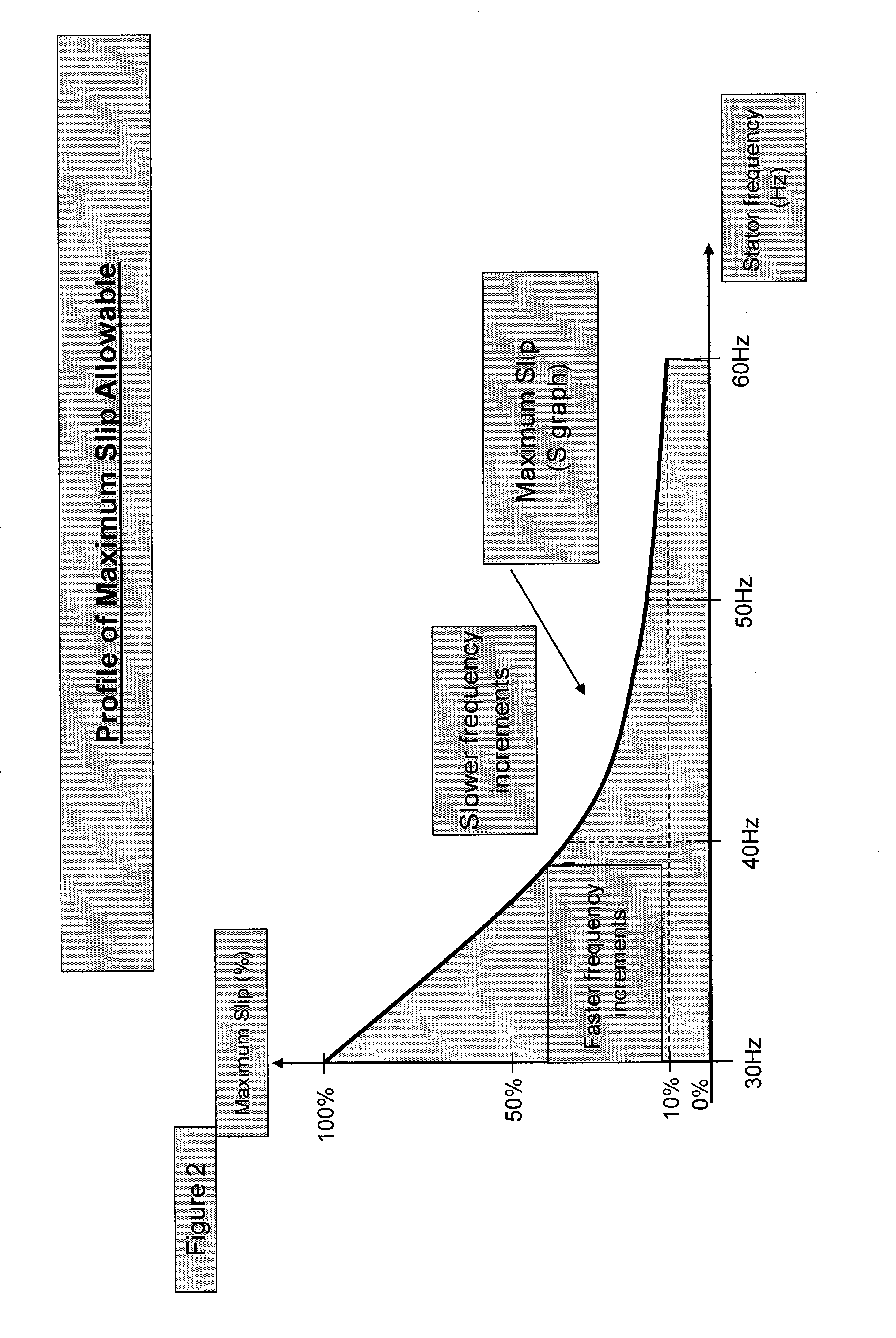Dephasing control
a technology of dephasing control and control frequency, which is applied in the direction of synchronous motors, ac motor stoppers, dc source parallel operation, etc., can solve the problems of increasing the cost and complexity of the motor construction, increasing maintenance costs, and difficulty in controlling the velocity, so as to achieve greater processing capacity, reduce the effect of maintenance costs and low cos
- Summary
- Abstract
- Description
- Claims
- Application Information
AI Technical Summary
Benefits of technology
Problems solved by technology
Method used
Image
Examples
Embodiment Construction
Definitions
[0035]Slip—The magnetic field generated by the stator windings induce a voltage to the rotor, which generates a current flow on the cage bars. This current creates a magnetic field which reacts with the stator magnetic field, producing the torque which moves the motor. The rotor attempts to follow through its movements the stator magnetic field, turning to an angular velocity {acute over (ω)}. The rotor's turn velocity is only equal to that of the stator's {acute over (ω)}s when the motor is empty, that is, without friction. As the demand for torque increases on the axis, the motor decreases its velocity then turning at an angular velocity which is always lower than the stator angular velocity.
[0036]This is called slip and it is defined as:
s=ωs-ωωs
[0037]Where:
[0038]Ws is the angular velocity of the stator magnetic field;[0039]W is the rotor angular velocity; and[0040]S is the slip.
[0041]Induction Motor—Also known as “squirrel cage motor” owes its name to the rotor shape: ...
PUM
 Login to View More
Login to View More Abstract
Description
Claims
Application Information
 Login to View More
Login to View More - R&D
- Intellectual Property
- Life Sciences
- Materials
- Tech Scout
- Unparalleled Data Quality
- Higher Quality Content
- 60% Fewer Hallucinations
Browse by: Latest US Patents, China's latest patents, Technical Efficacy Thesaurus, Application Domain, Technology Topic, Popular Technical Reports.
© 2025 PatSnap. All rights reserved.Legal|Privacy policy|Modern Slavery Act Transparency Statement|Sitemap|About US| Contact US: help@patsnap.com



